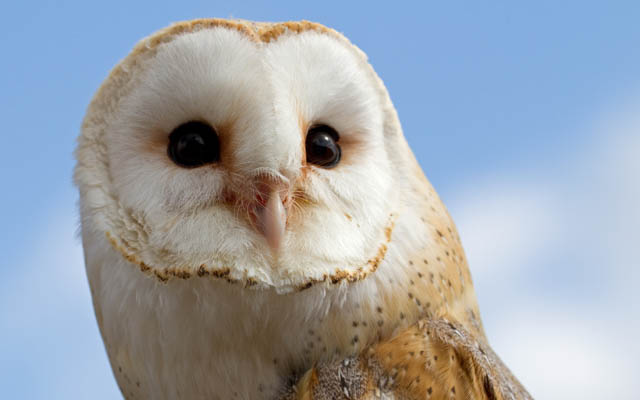Barn owls bounce back
The British Trust for Ornithology has reported a rise in barn owl nesting figures.


One of Nature’s most thrilling sights is that of the barn owl looming wraith-like out of the dusk on a hunting foray. This beautiful, yet elusive creature has been the good-news avian story of 2014; a mild winter and abundance of voles, its idea of a slap-up supper, have led to bumper breeding figures.
The statistics were bound to be an improvement on the disastrous breeding season of 2013 during a bitter March last year, regional volunteers had dismal reports of dead birds and empty nests but, even so, the BTO’s 2014 figures, with 17.2% bigger clutches and 43.6% more fledglings, are extraordinary and the best since records began.
Tyto alba is probably the most universally loved bird in Britain; it attracts a network of dedicated enthu- siasts who provide nesting sites and observation, is popular with land managers because it eats rodents and is a genuine beneficiary of Government schemes to increase field margins.
‘The barn owl ticks all the boxes,’ says ecologist Dave Leech, who heads up the BTO’s Nest Record Survey. ‘It’s charismatic, has great cultural significance and has been one of the real conservation success stories of the past half-century through agri-environment schemes and people providing nest boxes.’
The Barn Owl Conservation Net-work’s ringing data has gone through the roof: in May 2013, only 20 barn owls were ringed this year, the figure was 428. June saw an even more remarkable year-on-year rise, from 183 to 1,814.
One study area, about 8km (five miles) square, in the fens near Bourne, Lincolnshire, supported 12 adults and 38 young. In some areas, up to 65% of owls produced a second brood a volunteer in Montgomeryshire recorded the same female six weeks and three miles apart, on nests of four and five chicks respectively, having left her mate in charge of the first brood.
The barn owl’s enemies are cold, hunger, traffic and lack of nesting opportunities, due to barn conversions and old trees being blown down. However, its nocturnal lifestyle makes it one of the most difficult species to survey. ‘Mild weather has obviously helped, but even though there are ecologists working full-time studying vole cycles, there is no definitive answer to why it’s been a good barn-owl year,’ comments Mr Leech. ‘What we need is for people to carry on the good work observing barn owls and providing nest boxes, and for another countrywide survey to take place.’
Exquisite houses, the beauty of Nature, and how to get the most from your life, straight to your inbox.
Kestrels and tawny owls (left) also had a healthy breeding season, with, respectively, 22.3% and 23.3% more fledglings; wrens and robins had their best results for five years, song thrushes and blackbirds did well and bullfinches bucked the trend for finches with record productivity.
The wood pigeon was the main hard-luck story; the birds were badly affected by Hurricane Bertha, which hit at the height of their breeding season, in August chick numbers were down by 63% per nest. l The BTO has an online winter raffle, with a birdwatching trip to Spain as first prize. It costs £1 to enter; the closing date is February 9, 2015 (www.bto.org).
Kate is the author of 10 books and has worked as an equestrian reporter at four Olympic Games. She has returned to the area of her birth, west Somerset, to be near her favourite place, Exmoor. She lives with her Jack Russell terrier Checkers.
